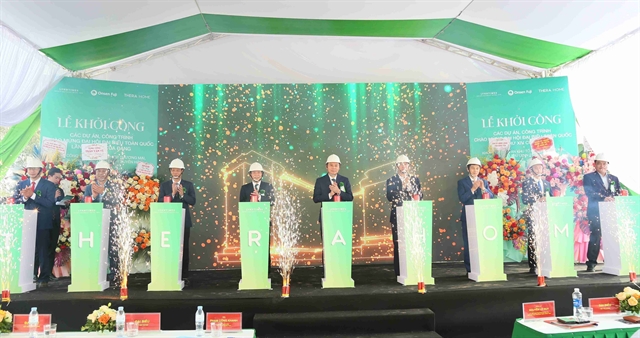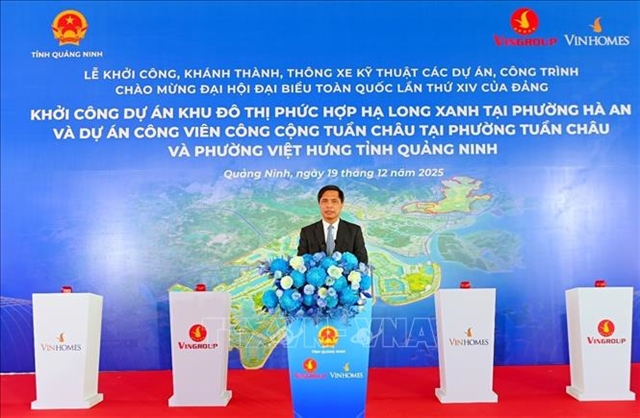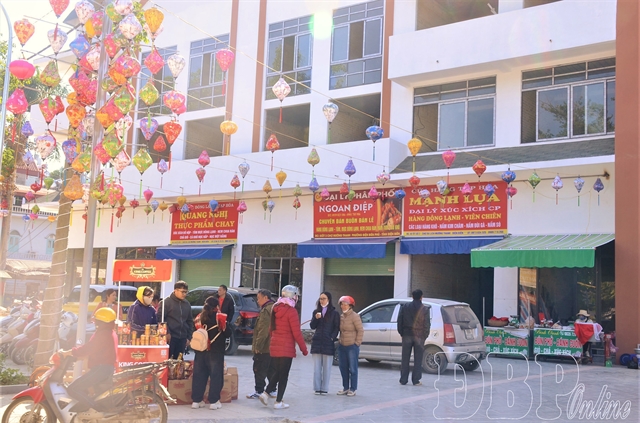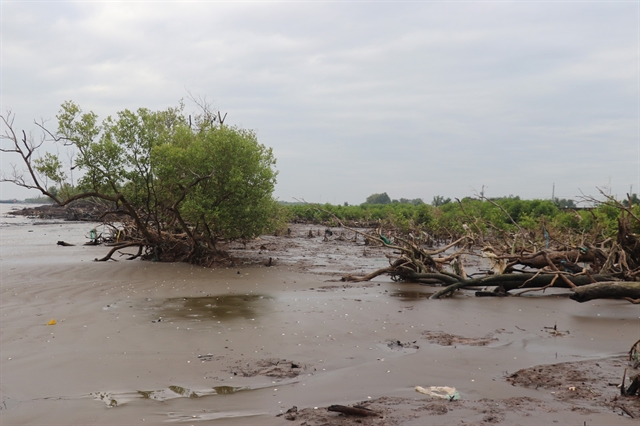 Environment
Environment

Pollution in HCM City canals is worsening as large quantities of household and industrial wastewater, as well as rubbish, are being discharged or dumped into city canals, according to the city’s Department of Natural Resources and Environment.
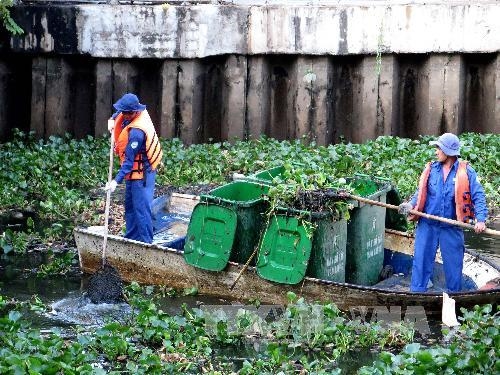 |
| Workers collect water hyacinths that block the flow of water on Nhiêu Lộc – Thị Nghè Canal in HCM City. — VNA/VNS Photo |
HCM CITY — Pollution in HCM City canals is worsening as large quantities of household and industrial wastewater, as well as rubbish, are being discharged or dumped into city canals, according to the city’s Department of Natural Resources and Environment.
A rapid increase in population, a lack of public awareness about environmental protection, and drainage of rainwater and wastewater into the same systems have contributed to the worsening pollution.
Wastewater from households and industrial production is not being treated at all or is being treated improperly, according to the department.
The department said the canals were also being polluted by large amounts of waste from neighbouring provinces.
The Nhum – Xuân Trường and Cái springs and Ba Bò Canal, for example, receive a large quantity of waste from households and industries in Bình Dương Province.
Similarly, Thầy Cai – An Hạ canals receive waste from households and industries in Long An Province.
Nguyễn Thị Thanh Mỹ, deputy director of the Department of Natural Resources and Environment, said the department would more strictly inspect production establishments that release wastewater into canals, especially in areas that are pollution hot spots.
The production workshops would be required to build a wastewater treatment facility and operate according to regulations, she said.
Enterprises with wastewater treatment facilities that release more than 1,000 cu.m of wastewater a day must use an automatic wastewater monitoring system. Data from the system will be sent to the department.
Enterprises that continue to pollute will have to relocate or stop operation.
The department is also working with neighbouring provinces to draw up regulations to control wastewater discharge from enterprises located near the city’s borders.
Drainage inspections
On Monday, the deputy chairman of the HCM City People’s Committee, Huỳnh Cách Mạng, inspected water drainage systems in Bình Tân and Tân Phú districts.
In Bình Tân, a project to upgrade more than 3.5 km of Kinh Dương Vương Street to prevent flooding is expected to be completed by the end of the year, according to the city’s Steering Centre of Urban Flood Control Programme. The project costs about VNĐ800 billion (US$36 million).
Nguyễn Ngọc Công, director of the city’s Steering Centre of Urban Flood Control Programme, said the flooding situation at Kinh Dương Vương Street would continue as water drainage systems along the street were being affected by housing encroaching on the land.
The drains that carry water to Lê Công Phép, Bà Tiếng and Nhảy canals are blocked.
Bà Tiếng Canal, for example, is blocked by rubbish, even though the Steering Centre dredged the canal in July.
In Bình Tân, three canals, a water drainage gate, a water drainage sewer and six manholes have all been affected by housing built illegally in certain areas, according to the city Steering Centre of Urban Flood Control Programme. In Tân Phú, two water drains and six manholes have been affected as well.
Mạnh told local agencies to dredge blocked canals and relocate households that have illegally built housing or structures near canals in Bình Tân and Tân Phú.
He also told districts to launch a public campaign to educate local residents about the environmental damage caused by throwing rubbish into canals. —VNS

